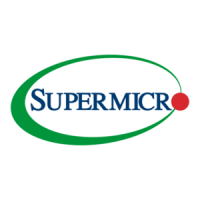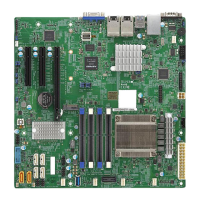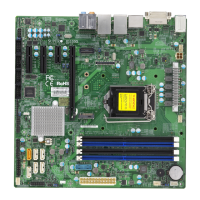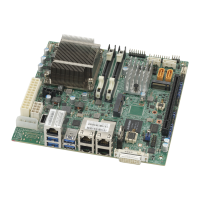15
Chapter 1: Introduction
Note: The table above is continued on the next page.
Motherboard Features
Peripheral Devices
• Two (2) USB 2.0 ports on the rear I/O panel (USB 0/1)
• Two (2) front accessible USB 2.0 headers (USB 2/3, USB 4/5)
• Two (2) USB 3.0 ports on the rear I/O panel (USB 6/7)
• One (1) front accessible USB 3.0 header (USB 8/9)
• One (1) Type-A USB 3.0 header (USB 10)
BIOS
• 128Mb AMI BIOS
®
SPI Flash BIOS
• ACPI 4.0, SPI dual/quad speed support, riser-card auto detection support, Dual Boot_Block support, BIOS rescue hot-key,
DMI 3.0, and SMBIOS 2.7 or later
Power Management
• Main switch override mechanism
• Power-on mode for AC power recovery
• ACPI power management
• Keyboard Wakeup from Soft-Off
• CPU Fan auto-off in sleep mode
• Wake-On-LAN (WOL)
• Server Platform Service
System Health Monitoring
• Onboard voltage monitors for CPU core, +1.0V, +3.3V, +5V,-12V, +12V, +3.3V Stdby, +5V Stdby, VBAT, HT, Memory, PCH
temperature, system temperature, and memory temperature
• CPU/system overheat LED and control
• CPU Thermal Trip support
• CPU 3-phase switching voltage regulator
• Thermal Monitor 2 (TM2) support
Fan Control
• Fan status monitoring with rmware 4-pin fan speed control via IPMI interface
• Fan speed control
System Management
• PECI (Platform Environment Control Interface) 2.0 support
• Intel® Node Manager
• IPMI View
• SuperDoctor® 5, Watch Dog, NMI
• Chassis intrusion header and detection
• Power supply monitoring

